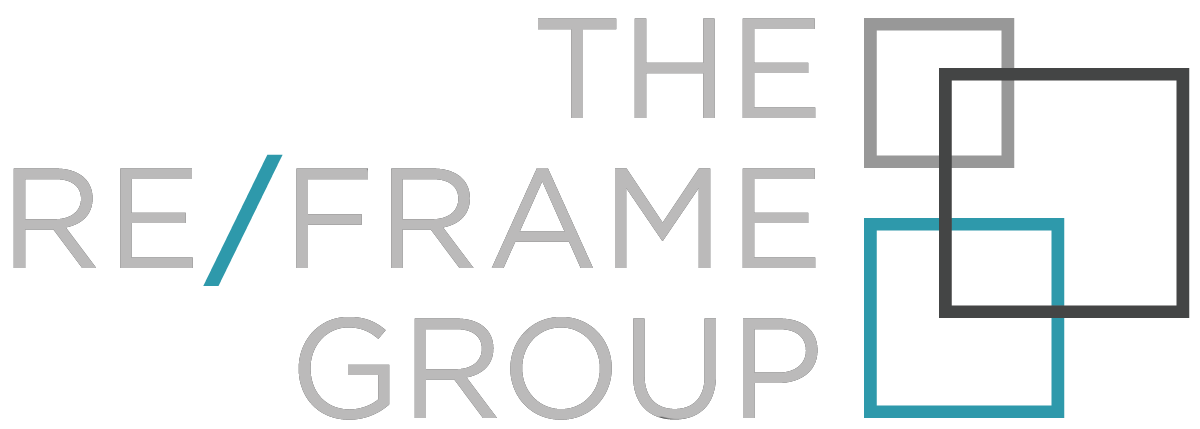The Ultimate CFO’s Insurance Guide
A CFO’s Guide to Insurance
Purchasing insurance may be daunting due to the overwhelming amount of choices you face. This CFO’s guide to insurance will help provide clarity on choices such as which insurer to use, which distribution channel, and even which advisor to use to help you put together the best insurance portfolio for your needs. To make the selection process even more difficult, insurance policies are hard to read and even harder to understand.
My hope is that this piece will give you a high-level overview of the key considerations when purchasing insurance and help you simplify the selection process. This article will not be covering any specific commercial insurance policy, but rather guide you through commercial insurance terms and best practices for selecting your policy and advisor.
What is Insurance?
To put it simply, insurance is a short-term contract of indemnity that renews annually. An insurance policy provides financial reimbursement when the insured is found responsible for causing loss or injury to a 3rd party or when a specific peril damages an object of insurance (ie. it will pay to replace your equipment if they are damaged in a fire). Other coverages such as business interruption are also available to replace lost income after an insured loss disrupts your business.
From the insurer’s perspective, their goal is to ensure that whatever premiums they are charging for insurance are greater than the losses from its portfolio of risks. Basically, they want to make sure they are taking in more money than they are paying out. Insurers will try to cover any shortfalls in this math with investment earnings to ensure they earn a profit.
One thing to note is that insurance only covers a limited number of risks. For example, while a business interruption policy would cover income lost due to interruptions to your business caused by a fire at a critical supplier, it will not cover any reputational damage you suffer due to delayed deliveries to clients.
Risk that is not transferable via an insurance policy should also be managed. Therefore, as a risk manager, you must work to identify, prioritize, and manage non-insurable risks as well. Depending on the situation, it may make sense to redirect some premium dollars towards managing those types of risks – especially if they would have a noticeable impact on the business.
What Should CFO’s Consider When Buying Insurance?
Most insurance buyers focus on getting the “best deal” possible when buying insurance. Part of this is the fault of advisors who sell based on price alone but if your business were ever to suffer a serious claim, the cheapest policy is rarely the best one.
Instead of focusing only on the price tag, here is what you should look at instead:
Insurer Selection
In Canada, there are 192 property and casualty insurers competing for business. Cumulatively, they write CAD$55.81 billion in net premiums and paid out CAD$41.6 billion in claims. Despite the large number of insurers writing business in Canada, only a select few are willing to write large policies. Among those insurers, if you want to choose one with a high credit rating from AM Best or Standard & Poor’s, that pool of potential insurers shrinks further.
Choosing an insurer, you want one that has:
· High credit quality per AM Best, etc.
· An underwriting/adjusting team that is collocated geographically with your operations
· A track record of paying claims promptly
· Stable and growth-oriented
· Good communication during underwriting, claims and servicing of the policy
Policy Wording
Wordings can vary widely from insurer to insurer and the standard contract wordings may not give you the protection you were looking for. Make sure you review the contract wordings with your advisor or – if the policy is big enough – even employ a specialist law firm that has experience reviewing insurance contracts to give you appropriate advice.
Advisor Selection
For most finance leaders, insurance is not in their core area of competency – which is why it is so important to work with a trusted advisor.
When selecting an advisor, ask yourself the following questions:
· Are you able to have an open and candid conversation with your advisor and underwriters?
· Does your advisor/team understand your business’ fundamentals and risks?
· Does your advisor have access to insurers that match your needs?
· Are there clear service expectations around audits and check-ins?
· Is your advisor placing your interests ahead of theirs?
· Are they accountable? Do they deliver on time, every time?
Does It Make Sense to Use More Than 1 Advisor?
Many insurance buyers believe that by approaching multiple advisors to quote, they can create competition and get a better rate. But the truth is, in 99% of the cases, there is no benefit to using multiple advisors.
Not many people know this about the insurance business, but an insurance company can only work with 1 advisor at a time on a particular policy. If the insurer has started working with one advisor, they will reject other advisors that approach them – we call this “blocking the market”. This means that there is no benefit to using multiple advisors unless one has access to markets or products that the other does not.
What you want to do is create competition amongst the underwriters so that they offer better terms or more competitive pricing NOT the advisors. A good advisor will be adept at creating this type of competition and leveraging one insurer against another to get you the best terms and pricing possible.
That said, there are always exceptions to the rule so if you’re receiving poor service or want to hold your advisor accountable and ensure they’re really working for you, assigning the account to another advisor might be beneficial.
Fair Pricing
We talk about pricing “last” here because even though it is important, the other considerations detailed above should be given priority. This old German adage holds true in the world of insurance: ”das billige ist immer das teuerste” – the cheapest is always the most expensive.
Other Risks
As we mentioned above, not all risks are insurable and sometimes there are better ways to handle certain risks. When structuring an insurance program with your advisor, you will also need a clear perspective on these other factors:
Risk Tolerance
Outside of an insurance portfolio, what are you doing to manage non-insurable risks? What about risks that can be economically retained? For certain risks like minor theft or shoplifting, it may be more economical to set aside a budget to cover those claims instead of purchasing an insurance policy.
Capital Market Risk
This is an important one to consider if you run a publicly traded entity or have external shareholders. How would capital markets react to a large loss? Were these risk disclosures identified in shareholder reports? Risks of this nature can be addressed with an appropriate Directors & Officers insurance policy.
How To Get The Best Pricing
Underwriters are busy people. To get the best pricing possible, you need to get to the top of their stack and make sure they feel comfortable with the risk. To do that, there are 3 C’s to focus on with your advisor:
Culture
‘C’ #1 is Culture. How do you treat employees? What does your retention look like? How are the leaders involved with the business beyond high-level decision-making?
Capture
Capture means taking photos or videos of your facility. This one helps the underwriters get a good sense of your facilities, job sites, etc., and their state of maintenance. If they are clean, safe, and well organized, have your advisor include this as part of your submission. Underwriters will look upon this favorably and view you as lower risk thus giving you better pricing.
Conversation
This helps for some of the more complex risks. Having a conversation directly with that underwriter either in person, on Zoom, or over the phone can do wonders for getting complex policies across the line.
As much as we like to do things online nowadays, nothing beats the assurance someone feels after an in-person conversation where you have answered all their questions in an open and forthcoming way.
Your advisor should be there with you to facilitate and prep you for the conversation.
Implementing these 3 C’s will help you “sell” your risk to underwriters, help them feel more comfortable with it, and ultimately, get you better pricing.
The other key, of course, is working with an advisor that understands how to put together a compelling submission, create competition amongst insurers, and leverage them against each other to get the best deal possible for you.
When Is the Best Time to Quote?
When should you start the process of shopping for your insurance or talking with another advisor? The key is to know your policy(s) expiration date and work backward.
You will likely want to see alternative proposals at least 2 weeks before your expiry date so you have time to decide. So, if your policy expires on January 1st, you’re going to want proposals to review by December 14th.
Your advisor will want to get quotes at least a few days before December 14th so they have time to review and correct any mistakes. That means they will want quotes in hand by December 10th at the latest.
In order for your advisor to get quotes in hand by December 10th, underwriters will need at least a 60-day head start so they’ll need to get submissions out by October 10th. This ensures you get the priority with underwriters and give them enough time to work with you.
Now, for the advisor to get all the information they need (loss history, photos, etc.) it may take an additional 30+ days. This gives enough time to go over any due diligence questionnaires, gather supplementary information, and every else we need to have a legitimate chance at getting you quotes.
All this means that you should start the process with your (new) advisor at least 90-120 days out from your expiration date to give yourself the best chance of getting the most competitive terms and pricing available. Realistically though, if you intend to re-evaluate your insurance arrangements, you should start talking to other advisors 6 months out because you want time to vet 2 or 3 different agents and pick one that you want to move forward with.
If you stick to this timeline, you will increase your chances of getting coverage at the best terms and pricing possible.
Bonus Tip #1: Ask your current advisor 90-120 days out from the renewal date for a marketing report on what markets they’re going to. Afterward, ask them for detailed responses to keep them accountable and ensure they are actually shopping the market for you.
Bonus Tip #2: In 99% of cases, you should only be quoting with 1 advisor. That said, you should still be in conversation with a few others to get a feel for the market and what you should expect.

Important Terms to Know
In the insurance industry, we use a lot of acronyms and jargon. Since transparency is one of our core values, I thought it was important for us to explain some of them here.
Letter of Brokerage (LOB) aka Broker of Record (BOR) Letters:
Remember that insurance companies can only release terms to one advisor at a time for an account. A LOB or BOR is a way of assigning control of an account from one advisor to another.
For example, you might use a LOB to assign control of your existing policy to another broker that is providing you better service. The incumbent broker would still earn their commission for the current policy term so you do not need to worry about being unfair to them, but services going forward will be provided by the new broker.
Marketing:
When insurance advisors refer to “marketing” we are not talking about advertising. In industry lingo, marketing is when we take your risk to market and shop around with insurers to get you the best terms and pricing possible.
“Blocked” or “Blocking”:
If you have ever approached another advisor to get competing quotes on your policies, they might have come back and told you that they are “blocked”. This happens when that insurer has already been approached by another advisor, so they are unable to quote again.
To avoid this, you should either stick with one advisor (provided their service levels are adequate) or assign markets to each advisor (ie. Advisor A goes to these 5 insurers while Advisor B goes to these other 5). Remember, the key is to create competition amongst insurers, not advisors.
Certificate of Insurance (COI):
As advisors, we are frequently asked to provide these as proof of insurance. This might be required by clients who want to retain your services, lenders who want to see proof of insurance before lending you money, or landlords who want to ensure their interests are protected.
If you’re interested in speaking to an advisor about commercial insurance, please email Jacques@TheReFrameGroup.com or book a call.


